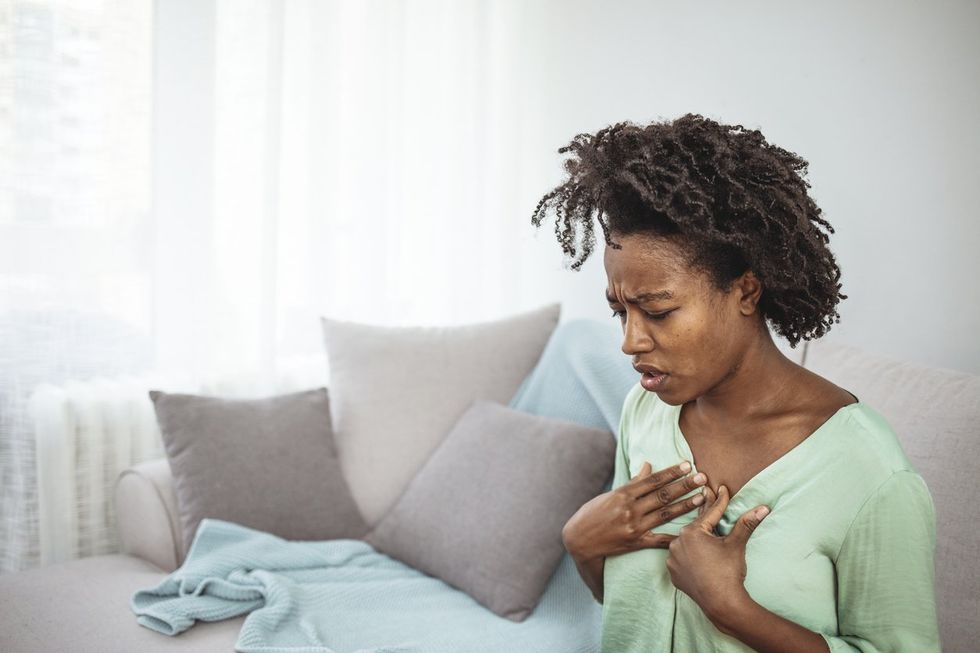

September is National Atrial Fibrillation (AFib) Awareness Month
Medically reviewed by Nieca Goldberg, MD
Cardiovascular disease (CVD) is the no. 1 cause of death in women in the US But only 44 out of every 100 women Know that cardiovascular diseases are your greatest risk. Knowing the signs and symptoms of cardiovascular disease and when to talk to your healthcare provider (HCP) can save your life.
What is cardiovascular disease?
CVD includes any disease that affects the heart or blood vessels. There are many different types of CVD, but some of the types that affect women the most are coronary artery disease, arrhythmia, and stroke.
- Coronary artery disease (also known as coronary artery disease) is the main cause of death in women. It is also the most common type of heart disease and is caused by a buildup of plaque on the walls of the coronary arteries, the tube-like vessels that carry blood to the heart.
- Arrhythmia occurs when the heart beats irregularly, meaning it beats too slowly or too fast or otherwise abnormally. The most common type of arrhythmia is atrial fibrillation (AFib), when irregular beats in the upper chambers of the heart make it difficult for blood to flow to the lower chambers.
- Stroke occurs when a burst or blocked blood vessel stops blood flow to the brain, causing brain cells to die. There are many different types of stroke, but 8 out of 10 strokes can be prevented.
What are the risk factors for developing cardiovascular diseases?
Prevention is key when it comes to reducing the risk of CVD. Some factors that may increase your risk include:
- Hypertension
- High cholesterol
- Of smoking
- Diabetes
- Being overweight or obese
- Eat an unhealthy diet
- Not getting enough exercise
- Drink too much alcohol
- Stress and depression
The female reproductive system also adds additional risk factors that men do not have:
- Have your first period before age 11
- Go through menopause before age 40
- Having polycystic ovary syndrome (PCOS)
- Experiencing certain pregnancy complications:
- Gestational diabetes (diabetes during pregnancy)
- Premature birth or birth of a baby with low or high birth weight
- Hypertensive disorders of pregnancy.such as preeclampsia and hypertension during pregnancy
Cardiovascular disease is the leading cause of death among new mothers.
What are the symptoms of cardiovascular disease that I should be aware of?
The symptoms of cardiovascular disease are different in women than in men, so it’s important to know what to watch for and when to contact your doctor.
In the case of coronary artery disease, having a heart attack is usually the first sign. As with men, the most common heart attack symptom in women is chest pain or discomfort. But in women, the signs of a heart attack may not be obvious. They may experience other symptoms that are typically less associated with a heart attack, such as difficulty breathing, nausea/vomiting, and back or jaw pain.
According to the American Heart Association, call 911 if you have any of these symptoms:
- Uncomfortable pressure, tightness, fullness, or pain in the center of the chest that lasts more than a few minutes or that goes away and comes back.
- Pain or discomfort in one or both arms, back, neck, jaw, or stomach.
- Difficulty breathing with or without chest discomfort.
- Breakouts of cold sweat, nausea, or lightheadedness.
Read: Symptoms of heart attacks in women >>
Symptoms of AFib may include:
- Accelerated heart
- Heart palpitations (a feeling that the heart is racing or skipping a beat)
- Difficulty breathing
- Chest pain
For women, feeling weak or fatigued is an additional symptom to watch out for. It is also common for women to experience any of these symptoms more frequently or for longer periods of time than men.
Stroke symptoms can appear quickly. Using the American Stroke Association Acronym FAST It can help you remember what symptoms to watch for:
F = Fallen face – Is one side of your face drooping or numb? Ask the person to smile. Is the person’s smile uneven?
A = Arm weakness – Is one arm weak or numb? Ask the person to raise both arms. Does your arm have a downward trend?
S = Speech difficulty – Do you speak with difficulty?
T = Time to call 911 – Stroke is an emergency. Every minute counts. Call 911 immediately. Note when any of the symptoms first appear.
Some other symptoms of a stroke may include:
- Confusion, problems speaking or understanding speech.
- Difficulty seeing with one or both eyes.
- Difficulty walking, dizziness, loss of balance or coordination.
- Severe headache with no known cause.
Read: Stroke vs. Heart Attack: Know the Signs and Symptoms >>
What if my healthcare provider dismisses my symptoms?
There is a misconception, even among some healthcare professionals, that women develop cardiovascular disease at much lower rates than men. One study found that both gender bias and biological differences between men and women may be to blame for differences in the diagnosis and treatment of CVD in women.
Read: Why don’t women receive the same treatment as men for heart disease? >>
If you experience any symptoms of CVD, talk to your doctor immediately. Be clear and direct about the symptoms you have, how much pain or discomfort they cause you, how long you have had them, and how often you experience them.
If your provider dismisses your symptoms or you don’t feel listened to, you have the right to get a second opinion from another provider. Ask if they can refer you to a cardiovascular specialist or find a new provider at the same or a different practice.
When it comes to your cardiovascular health, don’t wait.
This educational resource was created with the support of BMS.







